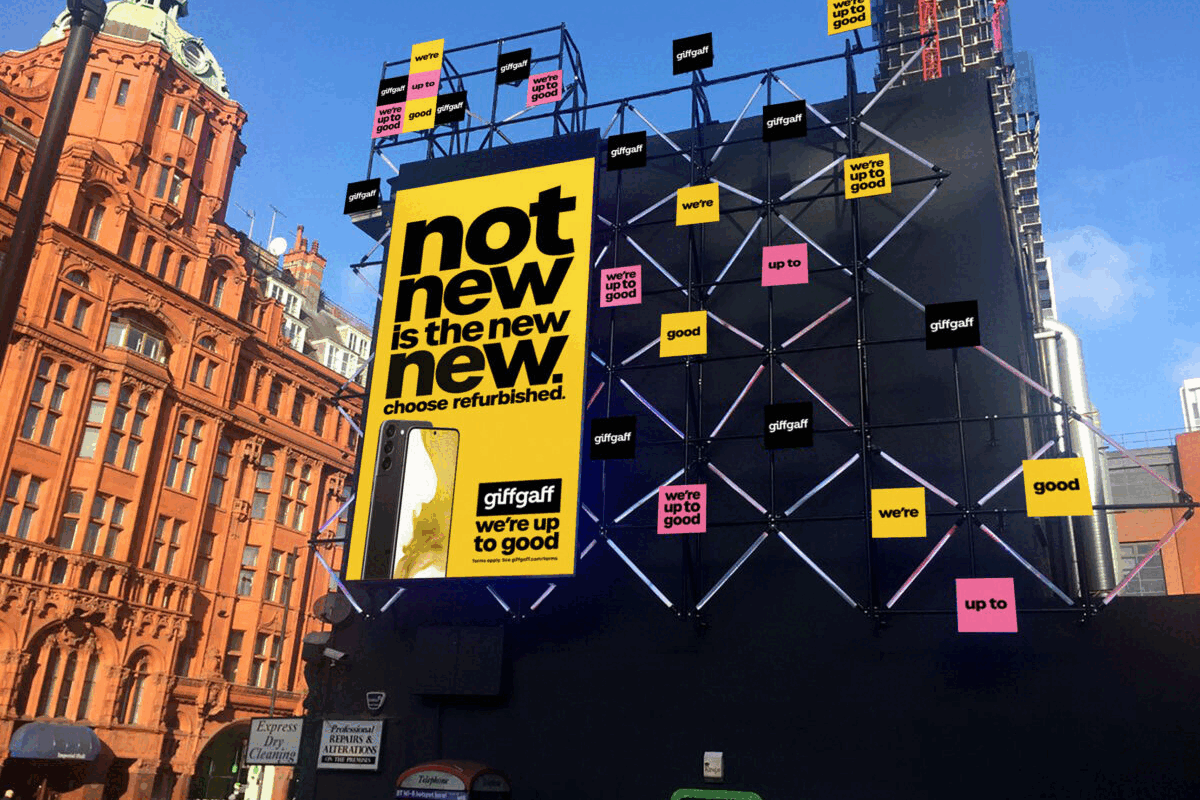What to Expect from Mobile World Congress
- Friday, February 19th, 2016
- Share this article:
We know many of you will be reading this while slaving over a hot iron as you prepare for a week slogging up and down the halls of the Fira Gran Via, so to try and help you make some sense of the show, we reached out to some key players in the industry to ask what they are expecting to see at this years show. Heres what they told us…
 Ross Sleight, chief strategy officer, Somo
Ross Sleight, chief strategy officer, Somo
MWC always heralds a glut of new hardware on show. Whilst we may be drawn like moths to the flame in the premium smartphone sector with rumoured launches from Samsung with the S7, LG with the G5 and HTC with the M10, its actually the lower-end smartphone market that provides the most interest, as the upgrade from feature to smartphone in developing markets will herald billions of new mobile-first connected customers globally.
Price is the barrier though, so the rush for the under-$20 smartphone, led by a plethora of Chinese manufacturers, looks to have added impetus with rumours this week of the Freedom 251 smartphone launching in India for under $4 (albeit heavily subsidized).
We’ll see the next stage of development for wearables and whether these can jump the trough of disillusionment, from packages of sensors for fitness or communications into invaluable and useful mass-market products. Similarly, the slower development of consumer-relevant IoT devices, be that in the connected home, the connected car or the connected city, will feature heavily, even though the real issue is not hardware development, but the consumer needs proposition and the software needed to run multiple connected services together.
But MWC will be won this year by Virtual Reality + Augmented Reality = Mixed Reality. The commercial launch of Oculus, Gear and other VR systems this year, combined with truly ‘wow factor’ VR content, together with the rapid development of Augmented Reality outside of product scanning into potentially immersive experiences means mobile is really powering the merging of the physical and digital worlds. The potential applications for both entertainment and marketing will make Mixed Reality the standout mainstream story from MWC.
 Julie Langley, partner, Results International
Julie Langley, partner, Results International
I think this will be the year that services get as much attention as technology. Established leaders across every industry are waking up to the fact that their market is being disrupted by new entrants who are using mobile to do things better and faster – think Uber, Airbnb and Instacart.
To remain relevant, they need to embrace mobility-led digital transformation, and there is a huge services market emerging to assist these established companies in re-thinking the way they use mobile to both engage with their customers and operate internally. The key challenge is navigating what has effectively become a two-speed IT system within most large organisations – the agile, front end website and app presence and the legacy enterprise software which still runs most of the organisation. Anyone who has the skills to enable genuine digital transformation in this kind of environment is going to be in demand this year.
 James Rosewell, founder and CEO, 51Degrees
James Rosewell, founder and CEO, 51Degrees
The consumer press headlines will be dominated by new handset launches from Sony, Huawei and Samsung. Elsewhere, however, the following advances in technology will steal the show:
Battery-enhancing technology in the form of energy-friendly silicon, greater mAh battery ratings and software that actively works to reduce rogue application battery drain will be prevalent in the devices arena.
With regards to radio, the Telecoms industry will be focusing on 5G – what it means and when to expect it. It’s likely opinion will be different dependent on country. Perhaps a consensus on roll-out timeframes within a three year window. Any 5G prototypes will be well received and are bound to secure column inches.
The impact of Apple and Samsung’s decisions to sanction ad blocking will dominate the ad-tech agenda. All manner of technologies and business models to protect revenue from programmatic and native advertising will be discussed. Some solutions may not even involve advertising. This threat to the advertising industry is real and ad-tech companies must optimise advertising to ensure that it is non-intrusive – an example of this is a device-detection solution. It is a crucial time for us to communicate with the industry to ensure advertising revenue is secured.
 Juan Ageitos, senior marketing manager, mGage
Juan Ageitos, senior marketing manager, mGage
I’m looking forward to a number of announcements in Barcelona this year. I’d anticipate an emphasis on the Internet of Things (or as Cisco is calling it, Internet of Everything). We will be seeing the latest developments in connectivity via the operators to millions of ‘smart’ things with smartphones as central hubs.
Sexiness will probably come from VR and AR headsets (similar to what we saw at CES) and this is a field where mobile phone manufacturers like HTC, Samsung and Sony are looking for differentiation.
In terms of device announcements, big players feel more comfortable doing their own events for product launches but I would expect some new models from Samsung (who always tries to steal the show) LG, HTC and even Microsoft!
 Conor Carroll, SVP, Europe and the Americas, global carrier solutions, Tata Communications
Conor Carroll, SVP, Europe and the Americas, global carrier solutions, Tata Communications
A big question among mobile network operators at MWC will be how they can maintain their relevance and revenues, as the commoditisation of mobile data and the popularity of OTT services continue to hit their bottom line.
Superfast 4G has brought rich video, location-based Augmented Reality and other high-bandwidth apps to users’ fingertips, enabling organisations to target their customers with more compelling content and offers on the go. But, problems arise when people travel abroad. Traditional roaming can no longer cope with these high data demands, grinding a speedy 4G connection to a halt and leading many of us to simply turn off roaming altogether when travelling abroad. Yet, if done right, there are huge revenue opportunities for mobile network operators in data roaming, and for enterprises looking to engage with roamers. With new approaches to data roaming on the horizon, I expect this to be one of the hot topics of the show.
 Nick Adams, digital strategist, Yoyo Design
Nick Adams, digital strategist, Yoyo Design
We’ve witnessed a huge boom in the use of personal fitness tracking apps and tech, often incorporating socialisation (and the mandatory fitness selfie).Western Europe saw unit sales of health and fitness trackers increase from 4.1m to 7m between 2014 and 2015, with similar percentage growth in APAC and N. America.
As the trend for performance measuring becomes a habit, I think we’re going to see a significant shift from mobile companies looking at further incorporating tracking technology into their handsets as they either look to take on the likes of Fitbit, Jawbone or Garmin, or partner with them.
Fitness hardware ever reduces the need to exercise with your mobile in tow. In order to remain relevant and part of the conversation, mobile manufacturers will need to consider how they can offer a paralleled user experience. Apple Watch is OK, except it’s £600 and not water-resistant – what are the mandatories when one person’s muddy park is another’s all-weather gym?
We’ve seen running, cycling, swimming become “sharing sports”. But what about tennis, football, fishing, crossfit, skateboarding – massively popular sports that can benefit from real time tracking, monitoring, performance measuring, filming, live streaming, playback and geo-tracking – all tied into your mobile.
With fitness tracking, the user is creating enormous amounts of data themselves. Mobile companies need to think about and demonstrate how this data can be used to enhance the user, category, brand, online/offline and consumer/retail experiences.

Chris Childs, managing directorUK, TabMo
Thanks to mobile’s powerful capacity to target consumers based on location and context, Mobile World Congress 2016 will reflect marketers’ increasing commitment to ensuring programmatic mobile is an integral part of advertising campaigns.
But precise, location-based targeting is of little value if the creative does not match the context. Someone shopping in the high street on a Saturday will have different motivations to the same person browsing retail outlets at an airport before they go on holiday for example. As a result, mobile ad platforms are responding to the need to support the targeting decisions and auto-optimisations they make with the right creative. This drive includes the recognition that TV ads are rarely suitable for the mobile screen, so we are seeing shorter ads that work on a portrait screen (rather than TV’s landscape format).
Meanwhile, the mobile sector knows it must be vigilant in tackling the advertising industry issue of ad fraud. Mobile advertisers are – rightly – demanding that their Demand Side Platform (DSP) has adequate measures in place to guard against ads that are unseen, fraudulent or damaging to the brand through bad placement.
And while ad blocking is a real issue, it seems unlikely that the ‘adblockalypse’ initially forecast will happen. Mobile World Congress will see media players turning to technology to make advertising less disruptive, more relevant, more targeted and more intelligent – in other words, useful to the consumer.
 Adrian Baschnonga, lead telecommunications analyst, EY
Adrian Baschnonga, lead telecommunications analyst, EY
Last year’s Congress saw vendors fly the flag for 5G, stressing the game-changing role it could play in the connected society. While some operators have announced technology trials and early deployments are expected within the next two years, wider rollouts are only expected in 2020, once standards have been finalized and new spectrum has been set aside.
The key challenge for the industry is to avoid over-hyping 5G. While superfast mobile broadband is a key ingredient for the Internet of Things, newer iterations of 4G will be able to support customer demands for some time yet.
Rather than vaunt 5G on its technical merits alone, operators and vendors should highlight the specific services, such as autonomous vehicles, that will gain the most from a step-change in network performance, while considering the new business models required to bring such propositions to market.
Flagship smartphone announcements will as usual be a centrepiece of this year’s Congress but nothing can hide the fact that life is tough at the top for the heavyweight device vendors. Emerging markets are now driving global smartphone shipment growth, but pricing pressure is pronounced as home-grown vendors square up to global brands, while the gap in features between high-end smartphones and mid-range devices continues to shrink. Leading vendors will have their work cut out justifying price premiums going forward, as smartphone penetration peaks in many markets and consumers become increasingly cost-conscious.
In this light, wearables and Virtual Reality equipment are assuming greater significance for established vendors. Wearable device shipments more than doubled last year, but they still account for just 5 per cent of the smartphone market in volume terms, while Virtual Reality devices are further back still on the adoption curve.
Looking forward, take-up rates for wearables will pivot on the mass market appeal of smart watches, while targeting business users could help widen addressable markets. Tie-ups with fashion and lifestyle brands can be exploited further, while a healthy ecosystem of apps is vital if wearables are to resonate with consumers in the long term.
The Internet of Things has been high on the Congress agenda in recent years and this year will see more news of key developments. Mobile operators are ramping up their IoT connections, while the promise of a hyper-connected world is fuelling plenty of M&A activity in the technology sector.
Yet the sheer range of use cases at hand – from connected cars and homes to factory automation and smart agriculture – will force larger players to become more selective in their strategic approach. Cross-industry cooperation has been a hallmark of the market so far, but the challenge now is to refine business models and overhaul partnerships so that initial successes can mature into scalable service propositions.
Standardisation remains a sticking point – the current world of IoT is a patchwork of competing technologies that may ultimately result in a confusing landscape for customers. The privacy and security demands of the Internet of Things requires greater focus – in an age of escalating cyberattacks, the collaborative nature of many IoT solutions means that guaranteeing end-to-end security is far from straightforward.















